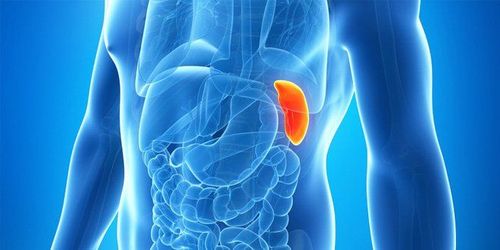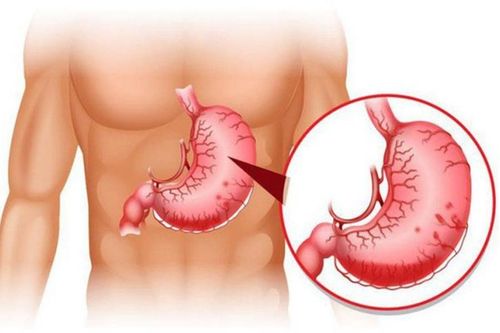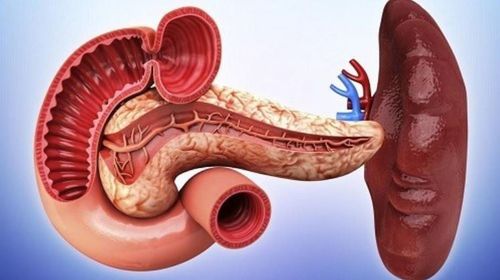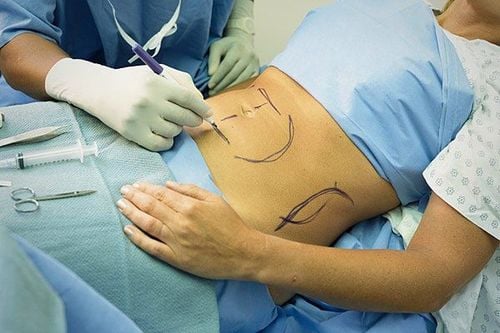This is an automatically translated article.
The article was professionally consulted by Specialist Doctor II Nguyen Binh - Department of General Surgery - Vinmec Ha Long International Hospital. Doctor Nguyen Binh has more than 20 years of experience in the field of anesthesia and resuscitation.Along with the development of science and technology, laparoscopic partial splenectomy is showing more advantages than open surgery. For successful surgery, it is impossible not to mention the role of anesthesia.
1. The position and role of the spleen in the body
The spleen is a small organ located on the left side of the abdomen, below the rib cage. The spleen has the following important functions:The spleen is involved in the production of lymphocytes - an important part of the immune system in the body. During the fetal stage, the spleen also produces red blood cells, platelets, and granulocytes. The spleen is also the site of destruction of aging blood cells, retaining iron, proteins and substances needed to create new cells. The spleen is also a place to store blood in the body: through the expansion of the spleen, it participates in the regulation of blood volume as well as the number of blood cells in the circulatory system. The spleen also plays a role in fighting infections for the body by filtering out bacteria and foreign objects in the blood.
2. Spleen injury
The spleen is the most easily injured solid organ in the body, the diagnosis of spleen injury is easy when the patient has typical symptoms such as:Location of injury in the spleen area. There are signs of blood loss syndrome. There are symptoms of peritoneal irritation. When a patient's symptoms are unclear, but a splenic injury is suspected, the physician may perform exploratory measures such as:
Probing. Poke wash. Emergency laparoscopy. X-ray . Supersonic . CT-scanner. It is found that when removing the spleen will weaken the patient's immune system, infections can become more dangerous. At that time, the patient will have to be vaccinated every year and use prophylactic antibiotics. This is completely not beneficial for the body, so in cases where the spleen is not damaged much, splenectomy will be used. part sale. Intravenous anesthesia plays an important role in a surgery, in laparoscopic partial splenectomy in trauma, doctors often use endotracheal anesthesia.

3. Endotracheal anesthesia laparoscopic partial splenectomy in trauma
Endotracheal anesthesia is a technique of general anesthesia through endotracheal tubes for the purpose of controlling breathing during surgery and resuscitation after surgery for patients. This method requires medical facilities to have all the necessary modern equipment, and the operator must be trained and proficient in techniques.3.1. Steps to perform endotracheal anesthesia laparoscopic partial splenectomy in trauma Check the record Check the patient Check the patient Perform the technique The general steps are: Patient position: supine, oxygen 100% at a rate of 3-6 l/min at least 5 minutes before induction of anesthesia. Install the tracker. Set up transmission. If necessary, pre-anesthesia can be performed. Induction of anesthesia: Sleeping pills. Analgesic . Muscle relaxants The condition for intubation is that the patient must sleep deeply and have enough muscle relaxation. Carrying out oral intubation: insert the endotracheal tube through the mouth, put the cannula in the mouth to prevent the patient from biting the tube (if necessary). Maintain anesthesia with intravenous or volatile anesthetics, analgesics, and muscle relaxants (if needed). Control the patient's breathing with a machine. Criteria for extubation: The patient is awake, following the doctor's orders. Patient can raise head for more than 5 seconds, TOF >0.9. The patient is breathing on his own, the respiratory rate is within normal limits. Pulse and blood pressure are stable. Temperature > 35 degrees C. The patient had no complications of anesthesia and surgery. 3.2. Complications and management in endotracheal anesthesia laparoscopic partial splenectomy in trauma 3.2.1. Reflux of gastric juice into the airways Gastrointestinal fluid is found in the oral cavity and airways. At that time, it is necessary to immediately aspirate the fluid, place the patient in a low position, and tilt the head to one side. Place the endotracheal tube quickly and clear the airways immediately. Then it is necessary to monitor for lung infections. 3.2.2. Hemodynamic disorders Patients with hypotension or hypertension, cardiac arrhythmias (tachycardia, bradycardia or arrhythmia). Treatment depends on the specific symptoms and cause.

Please dial HOTLINE for more information or register for an appointment HERE. Download MyVinmec app to make appointments faster and to manage your bookings easily.














